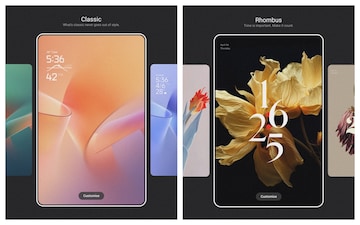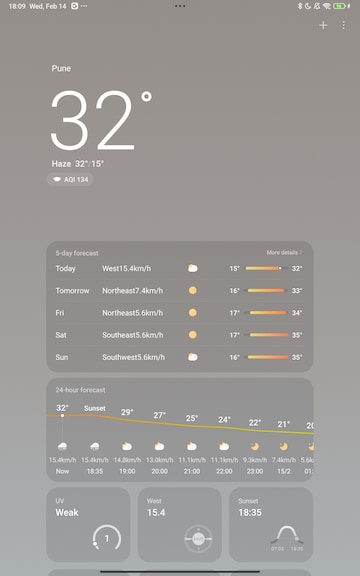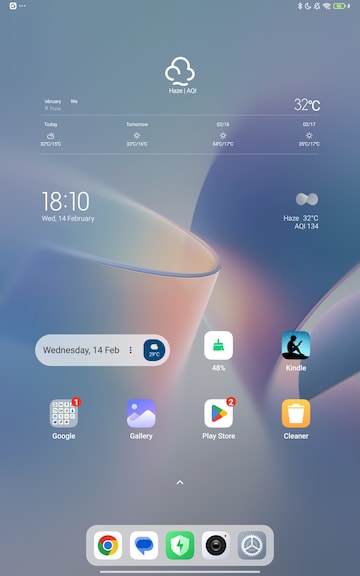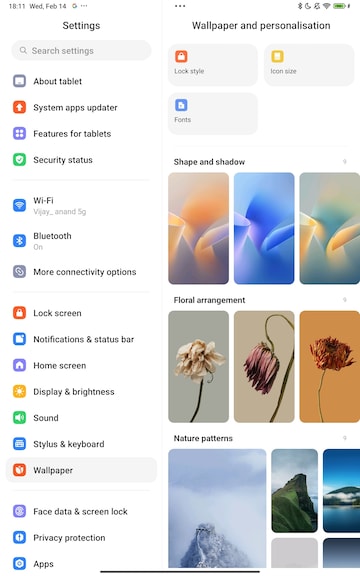
By now, everybody using Xiaomi's flagship 13 Pro smartphone and Pad 6 tablet would have received the overhauled version of its operating system, called HyperOS. The OS started rolling out to the 13 Pro in the first week of January, with Pad 6 getting the update over the past 10 days or so. HyperOS is not just a rename/reskin of MIUI with fresh animations. It's the OS that Xiaomi says will connect all its devices as the company, which turns 10 this year, sets its sights on becoming more than just a consumer tech company.
After years of playing with mid-rangers, Xiaomi's 13 Pro catapulted it to the top of the line — the device was one of the best Android devices I tested in 2023, with a robust yet classy screen and an even better camera setup. Complementing all this was MIUI, which was fluid, smooth and a pleasure to use.
Full disclosure: I didn't get the Xiaomi 13 Pro at launch, so I could not write a review. But Xiaomi did allow me to use the device for a few delightful months — months during which the 13 Pro blew me away with the sheer depth of customisation without losing its innate charm.
Enter HyperOS
Xiaomi, which announced HyperOS last year, said it is an improvement on MIUI. The first edition of the interface is based on Android 14. The company has reportedly been working on the software since 2014. It is said to be designed keeping internet of things (IoT) in mind.
During the launch of the Redmi Note 13 series last month, Xiaomi India President Muralikrishnan B said the brand aims to become more than a consumer tech company, with HyperOS providing the connective tissue between smartphones, wearables, smart home products, and electric cars — though the last might not make it to India for a while. Muralikrishnan said Xiaomi's ambition is to become a "smartphone x AIoT (artificial intelligence of things) brand," an ambition that would be fuelled by HyperOS and the company's renewed focus on "premiumisation."
Anuj Sharma, Chief Marketing Officer of Xiaomi India, explained that the "premiumisation" endeavour began with the overhaul of their OS.
"Price is just one part of the equation, and unfortunately, many people associate 'premium' with a hefty cost. However, there are other crucial elements to consider when evaluating the overall user experience of a device. At Xiaomi, we place significant emphasis on this aspect, going as far as revamping our entire operating system, a challenging feat in itself," Sharma said.
The HyperOS experience
While plenty of Android skins have borrowed a leaf from iOS, Xiaomi has, at times, been accused of outright copying Apple — and it is a rip-off, a well-done one at that. There's nothing wrong in seeking inspiration from something that works — even Samsung's new Always-On Display in OneUI 6.1 features an 'always on' wallpaper that is clearly inspired by Apple's lock-screen design.
In HyperOS, it is the control panel that is reminiscent of iOS. Xiaomi has removed labels on the tiles, making them seamless and flowing. The lock screen customisation options offer a nod to iOS, with three styles: Classic, Magazine, and Rhombus, providing an effortlessly refreshing experience.

The lock screen customisation on HyperOS is, in my opinion, the best implementation on any Android skin. It's a breeze to refresh your lock screen with just a couple of taps, showcasing Xiaomi's knack for easy personalisation.
Redesigned apps & settings
Some apps like Weather, Calculator, and File Manager received a facelift for better readability and aesthetics.

The new MiSans custom font pairs surprisingly well with the interface, and the home screen icons now boast more detail.

The consolidated wallpaper and personalisation page make it easy to tweak settings without the hassle of navigating through different menus.

Currently, HyperOS is rolling out to the Xiaomi 13 Pro and Pad 6 soon. Any device launched with Android 12 or above gets HyperOS and Android 14.
Focus on 'premiumisation'
Sharma says premiumisation is defined by five pillars — look and feel, design and aesthetic, longevity, processing power, and battery. He says Xiaomi always tries to walk the tightrope by balancing value and price.
"We try and get the innovation out for as many people as possible, but price is no longer a variable that holds us back. Sometimes the value part becomes really important. The value that a customer sees at a particular price bump, maybe higher than the price point, and that is okay," Sharma said, referring to the Redmi Note 13 series.
While smart home automation is far from common in India, smart devices are not. Increasingly, people are looking towards smart appliances and gadgets — security cameras, vacuum cleaners, televisions, lights, etc — to make their lives easier and this is where Xiaomi and HyperOS hope to make a mark.
"Once you've hit a threshold number of devices, it starts becoming unmanageable if they don't work together. I think that's where Xiaomi can bring in all of that. It used to work really well with the Mi Home app earlier and right now, with HyperOS it just becomes seamless," Sharma explained.
(Edited by : Shoma Bhattacharjee)
Check out our in-depth Market Coverage, Business News & get real-time Stock Market Updates on CNBC-TV18. Also, Watch our channels CNBC-TV18, CNBC Awaaz and CNBC Bajar Live on-the-go!


Interview | PM Modi targets Naveen Patnaik and BJD — asks Odisha a chance for BJP
Apr 28, 2024 7:53 PM
PM Modi says great men like Nehru and Ambedkar were against reservation based on religion
Apr 28, 2024 6:41 PM
Exclusive | Congress has turned Bengaluru from 'tech hub to tanker hub': PM Modi
Apr 28, 2024 6:18 PM
Modi Interview | Here's what the Prime Minister said on inheritance tax
Apr 28, 2024 6:05 PM

